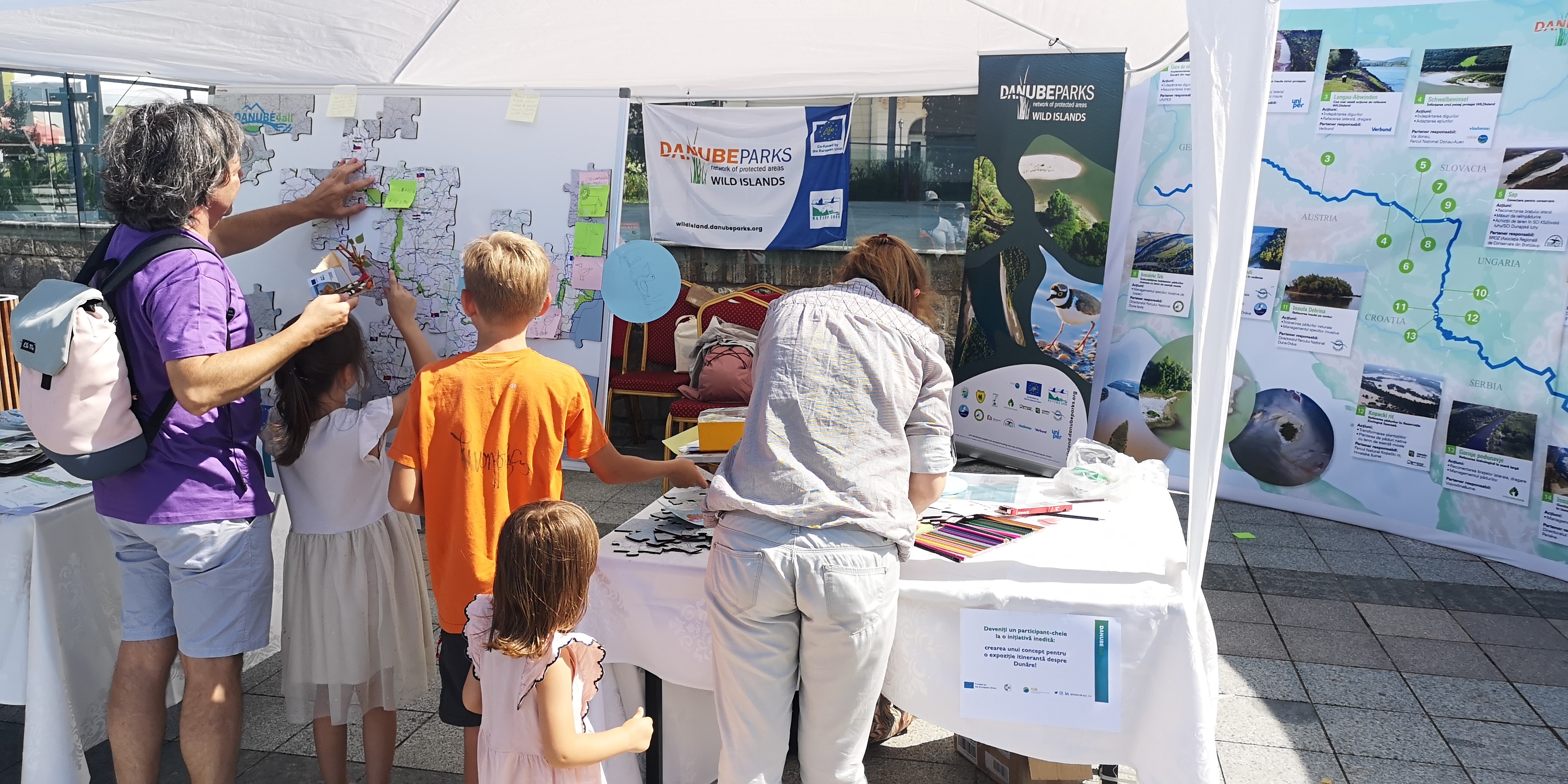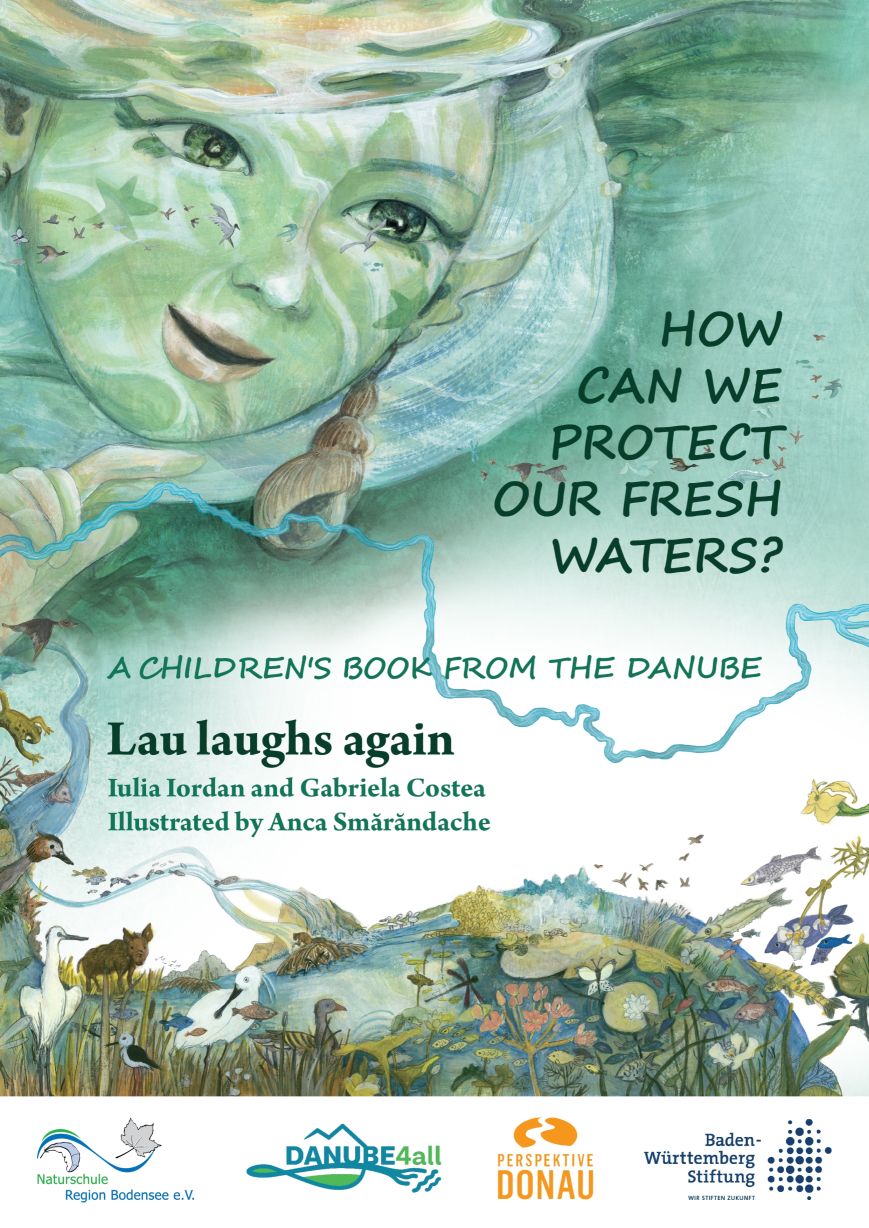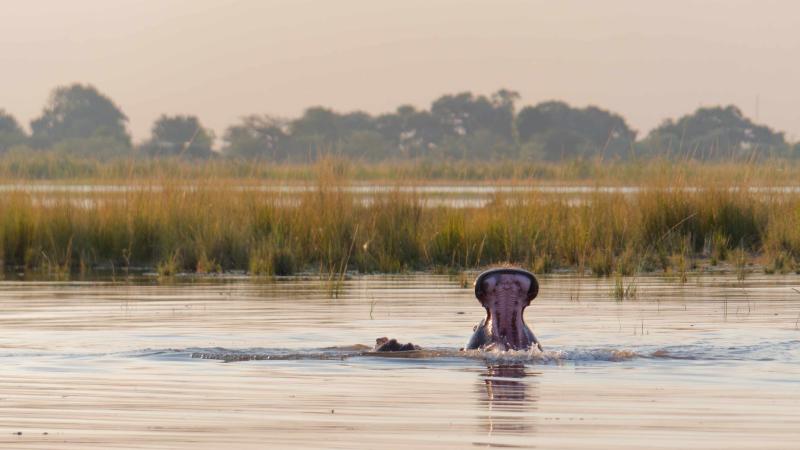
Gabriela Costea | © David Ausserhofer/IGB
Dr Costea, how long have you been studying the Danube, and do you have a personal relationship with the river or did it just happen?
Both! I am an aquatic ecologist and I worked for many years at the Natural History Museum in Galați, Romania, which is located right on the Danube. This city in southeastern Romania is about 100 kilometres from the Danube Delta. The last tributary of the Danube, the Pruth River, joins the Danube at Galați. The Pruth forms the border between Romania and Moldova, where the river can still meander freely in its floodplains for 300 kilometres. As curator of the Natural History Museum in Galați, I regularly took school groups on excursions there, where they enthusiastically discovered and examined the diverse fauna of the Pruth floodplains. I have always loved this landscape!
Did the Danube also play a role in your decision to join IGB?
In a way, yes. After 16 years at the museum, it was time for a change, so I applied for a postdoctoral position at IGB, which interested me very much. Here, we developed in the RESI (River Ecosystem Service Index) project, an index to assess the multiple ecosystem services provided by water bodies. This RESI index is now widely used to capture an overview of the diverse user interests involved when developing management plans for a river, and to develop measures that promote as many ecosystem services as possible. One example is the development of two scenarios to improve flood protection along the Danube in Bavaria. We were then able to extend this assessment approach to the entire length of the Danube in collaboration with international partners as part of the EU Interreg IDES project, creating a map of available ecosystem services from source to estuary.
What was the idea behind it?
Climate change is causing more floods and droughts. We therefore need to improve flood protection by giving rivers more space and increasing water retention in the landscape. However, this often conflicts with the interests of agriculture, for example. Integrative water management therefore has to take into account many sectors of society, such as agriculture, nature conservation, inland navigation and tourism. Good concepts represent the first step towards good solutions: you can’t go straight to implementation, as there are too many stakeholders involved. Moreover, the Danube flows through many countries, with different environmental cultures and socio-economic structures. To really change things, to enable an integrated approach to the river and its floodplains, communication between all these stakeholders is needed. This is what we are currently working on in the EU Horizon Lighthouse projects Danube4all and Restore4Life. Their focus is less on scientific work but more on developing action plans for the Danube.
What is the aim of these projects?
Scientific evidence clearly tells that we need nature-based solutions to protect our waters and floodplains and to be able to further benefit from them in the face of climate change. However, there is still a widespread societal belief in engineered solutions, for example that flood protection is best provided by high dams. In times of climate change, with its sometimes unreckoned effects, we need to respond in a flexible, adaptive and scalable manner, and manage our environment in a multifunctional way, i.e. thinking about people, business and nature conservation together. For example, when it comes to creating more space for rivers by revitalising floodplains: they serve people for recreation and have a tourist value, just think of the many successful cycle paths along Central European rivers. At the same time, floodplains are retaining pollutants, are cooling our environment in summer as they store water, and represent hotspots of biodiversity. However, water management and agriculture traditionally can make little use out of active floodplains. Communication with many stakeholders is therefore needed to promote modern, multifunctional approaches of floodplain management.
How can this be achieved in practice?
As part of an EU project team, we are developing a comprehensive, scientifically sound and practice-oriented Restoration Action Plan for the Danube, in which the stakeholders are explicitly involved as co-creators from the outset. Our aim is to find restoration solutions that are tailored to local conditions and meet the needs of the local population. Together, we look at what solutions can be implemented locally to improve the current ecological status and, for example, flood protection, while at the same time providing opportunities to develop local sustainable business models. We also need to convince local people of the opportunities these solutions offer – and this is where communication comes in.

Citizens along the Danube can document their ideas and questions on a puzzle wall. The next step will be to create an exhibition. | © Costea/IGB
How do you approach this?
Here, I am benefitting from experience in environmental education at the Natural History Museum. We take a bottom-up approach, as implementation of revitalisation projects is much easier if they are viewed positively by local residents. This means that the first step is to explain to the local people why a certain measure – such as the revitalisation of floodplains – is not only beneficial for the Danube, but also for them. By involving them through co-creation, we can find out what local knowledge they might contribute that we were still lacking, and how to communicate the project in the best way. To this end, we are currently developing a concept for a touring exhibition about the Danube, which will also be co-created with target groups on the Upper, Middle and Lower Danube, as well as with nature conservation and museum experts. We have used at various events a huge puzzle wall with the Danube basin in poster format in order to interact with people living along the Danube and to collect their ideas for the design of the planned touring exhibition: What should be the core message of the Danube exhibition, what important questions should be addressed, and what visualisation methods would be attractive?
What kind of experiences have you had with your actions so far?
In this co-creation work with the jigsaw puzzle, we noticed differences between Western and Eastern European target groups in terms of their willingness to contribute ideas. In eastern countries, in particular adults are not used to being asked for their opinions and ideas. Instead we reach more children and young people there than in western countries.

The children's book Lau lacht wieder is already available in German. An English translation will follow in early 2025.
You’ve just published a book about the Danube together with a Romanian children’s author. What was the idea behind it?
For me, the task of environmental education for the protection and renaturation of the Danube is like a cube whose sides represent different approaches, but which belong together. The children’s book, with which we address children and their parents, represents only one side of the cube. It creates a link between the projects and the world of children’s experiences, because the book uses different animals of the Danube as characters with which children can identify. In addition, kids will also encounter various problems that the Danube is currently suffering from, such as dam construction, water pollution and invasive species.
And all this with the help of a fairy tale ...
...that’s right. I used the fairy tale of “Schöne Lau” by Eduard Mörike, who lives in the Blautopf, a large karst spring of a tributary of the Danube. This fairy tale is taken up and further developed in our environmental education children’s book “Lau lacht wieder” (Lau laughs again). In it, the river nymph Lau sets out on a journey along the Danube, where she meets many of the Danube’s inhabitants, learns about their habitat and its threats, and wins them as travelling companions. I developed the content of the book and provided scientific support, trying to translate scientific findings into language suitable for children: Which creatures are living in the Danube, twhich are the human pressures on the Danube, and what can be done to protect the river? That’s why I collaborated with a Romanian children’s author and an illustrator. It was a challenging exercise for me, during which we realised how difficult it is to take complex ecosystems and issues and put them into a fairy tale format that children can understand: it took a year and a half from the idea to the finished manuscript.
You’re also planning to stage the story of the river nymph Lau as a puppet show – why?
The material in the book offers more opportunities to reach different audiences. We are also organising feedback sessions after the readings, asking the audience what they liked about the book, what they missed and what they would like to see more of. Storytelling and drawing workshops are also planned. Once these ideas have been collected, a puppet theatre play will be developed. The book has only just been published, but we can already see that people are excited about it.
Hand on heart – do you think it will be possible to restore the Danube to an ecologically good state which is at the same time beneficial to people?
Yes. It is this conviction that gives me the passion and energy to work for the development of environmental communication! I know Romania and Germany well, as well as the other Danube countries, and I would like to build bridges of knowledge and understanding within and between these countries. Fortunately, our environmental education network is growing. This also includes, for example, ministries, which are ultimately responsible for implementation and are therefore essential for the transfer of knowledge to society.
Do you see yourself more as a scientist or a communicator?
I am very curious about the results of science and always excited when they lead to new approaches to river management. I want to make them understandable and share them with others. I particularly enjoy explaining and raising awareness of the many functions of intact aquatic ecosystems. We need to be creative and find new methods, and my experience in environmental education helps me to do this: today’s texts need to be concise and well-structured to be read, so we have to develop new ideas for communicating content. After all, developing scientific principles alone is not enough to manage our rivers and floodplains in a way that we can pass them on to future generations as intact ecosystems – with all the socio-economic benefits that they provide.
The interview was conducted by Wiebke Peters.







